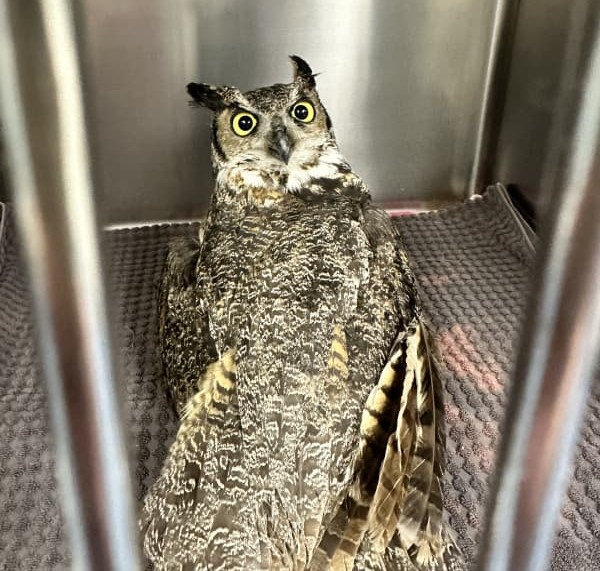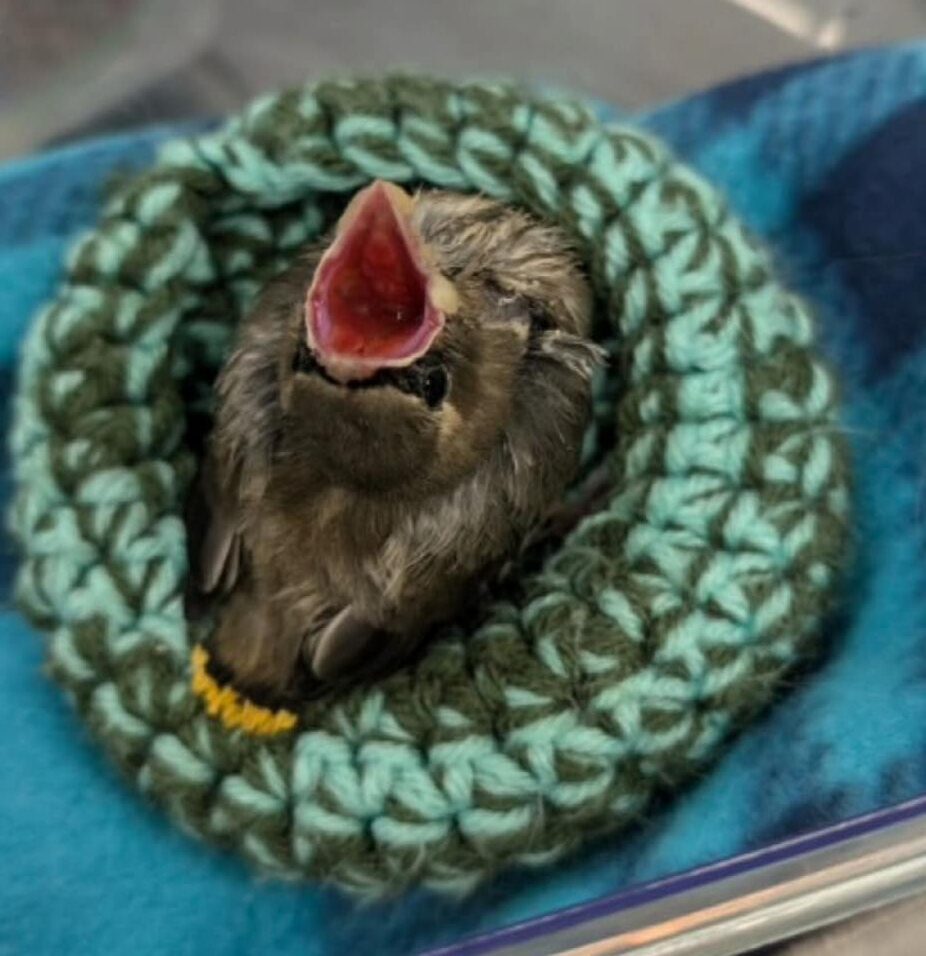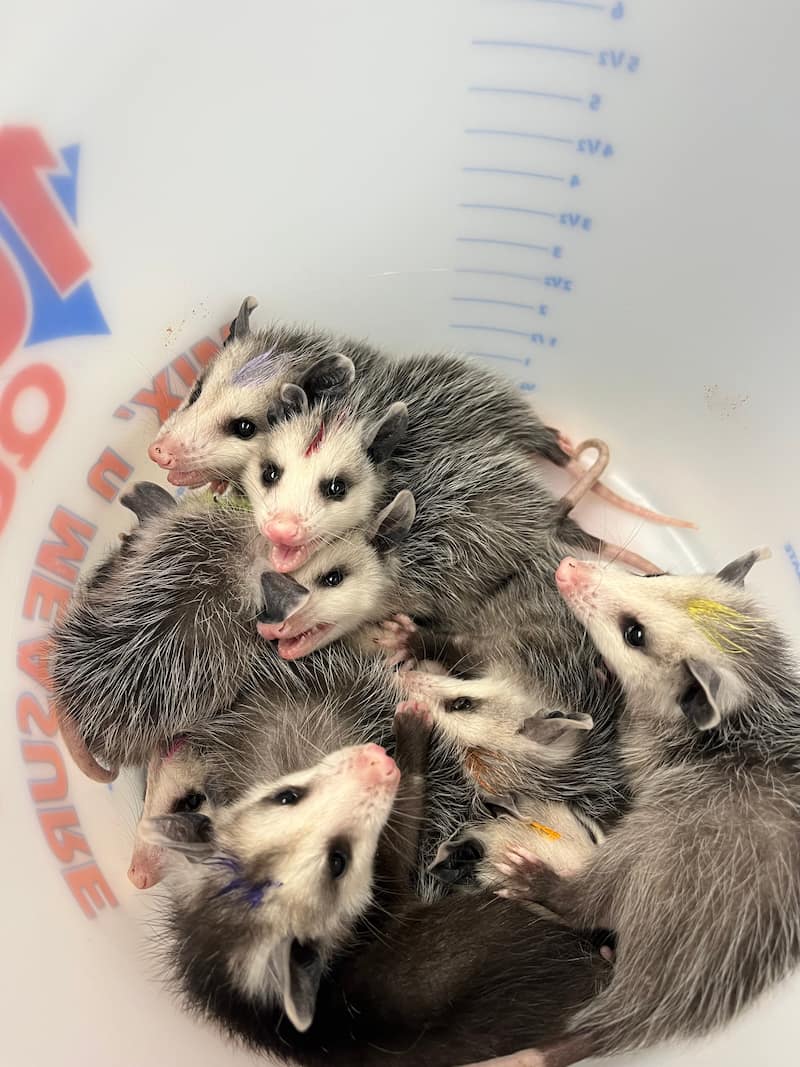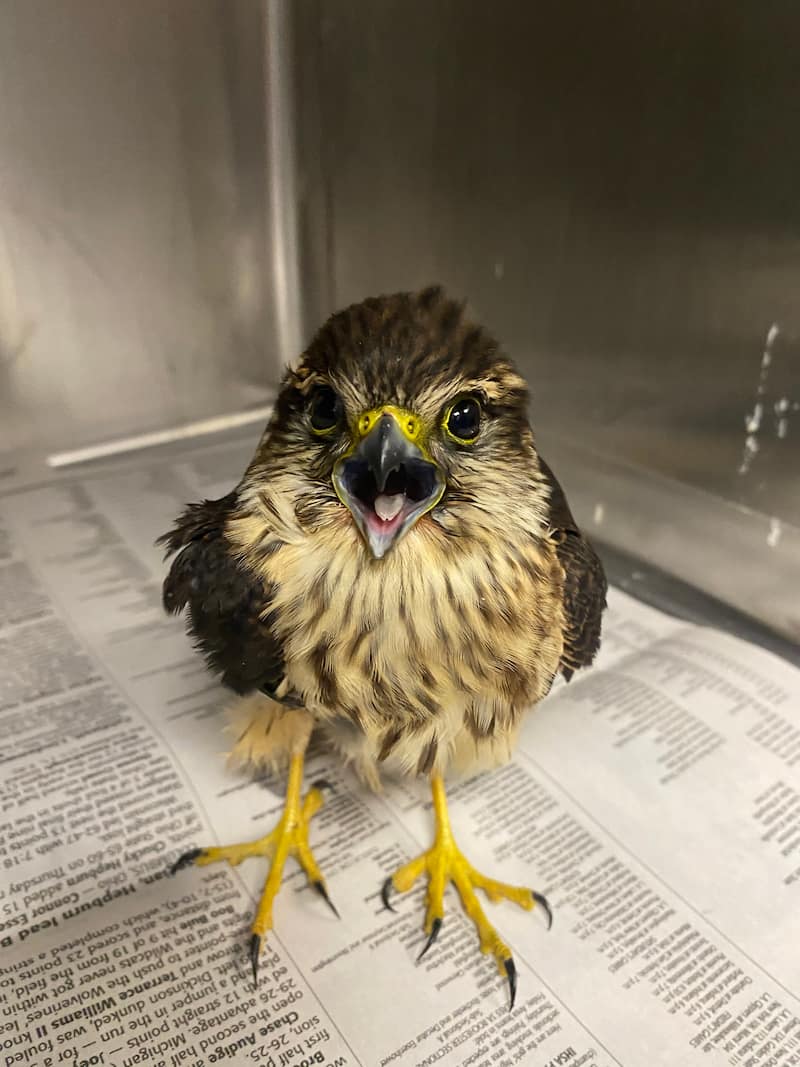Great Horned Owl, Bubo virginianus
The great horned owl, Bubo virginianus, is found across the majority of North America. Here in Illinois, they are found across the entire state. They are very adaptable and can be found in trees in a variety of habitats, including forests, prairies, and some urban areas. They are easily identified by the tufts of feathers over their ears, which resemble horns.
Arrival to the Wildlife Medical Clinic
Towards the end of August, an adult great horned owl was presented to the clinic by a good Samaritan, and all that was known about it on presentation was that it was unable to fly. On the initial exam, the patient was thin and had severe diarrhea. Radiographs were taken, which confirmed that the patient did not have any fractures. A fecal was run, which showed the patient had a very heavy endoparasite load of capillaria. The patient was treated with a round of dewormers and antibiotics. A creance flight test was also performed, which is where the patient wears falconry equipment and is temporarily attached to a long line that is connected to a weight. Performing creance allows us to evaluate the patient’s flight while being able to easily retrieve them for continued care. At the initial creance, the patient would only defensively posture and did not attempt to fly.
A few days after treatment, a recheck fecal was performed. The capillaria load was lower but still heavy, and another deworming was performed. There is a fungus, Aspergillus, in the environment that birds can be susceptible to if they inhale the spores while they have a compromised immune system. Since there was potential for this patient to have a compromised immune system, a short prophylactic course of an antifungal medication was started as well. The patient had started declining in weight by the end of August and was not as interested in food, so the patient was supplementally fed for several days to prevent any further weight loss.
Continued Care
A recheck was performed on a fecal sample in early September to re-evaluate the patient’s parasite load, and there were now fewer capillaria seen, but another endoparasite (coccidia) was also seen. Yet again, another dewormer was given for the intestinal parasites. A blood sample was also taken at this time and sent to the Veterinary Diagnostic Lab at the University of Illinois, and it was found the patient had moderate levels of three different blood parasites, including Plasmodium, or avian malaria. At this point, a daily anti-malarial drug called pyrimethamine was started. The goal for treatment for these blood parasites is to get them to low levels, as the patient will never be completely cured of them. A fecal and blood sample were rechecked about a week afterwards to monitor the patient’s response. The initial two intestinal parasites were not present, but another type of intestinal parasite (strongyle) was seen. Another dose of a dewormer medication was given. There were no major changes seen on the blood sample, but the blood parasites that were present can require a lengthy period of treatment to get them adequately controlled. At this time, the amount of food the patient was being offered was also increased to help keep weight on the patient, as all the food offered was being eaten.
Turning the Corner and Gaining Strength for Release
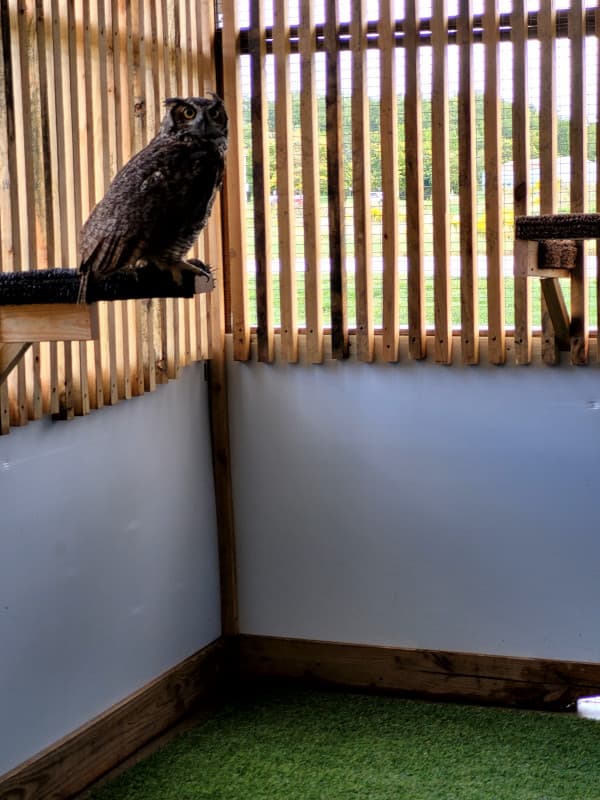
Towards the end of September, a recheck was performed where blood and fecal samples were taken and another creance session was completed. The fecal showed a very low strongyle load. It was elected not to administer another dewormer at this time as it was a low number of parasites, and the patient will naturally come across these parasites in the wild. The blood sample showed lower levels of the blood parasites, and it was decided to stop the anti-malarial course the patient had been on, as the levels were low enough for the immune system to keep them in check.
We tried another creance session and this time, the patient flew short distances and had symmetrical flight. This patient was getting stronger and healthier, so it was time to move them to an outdoor flight cage. This allows the patient to move around in a larger space and for us to access their flight better before considering release. After monitoring the patient in the outdoor flight cage, we decided to transfer them to another licensed rehabber in early October to continue monitoring the progression of healing while allowing the patient to fly in an even larger enclosure and gain more strength before returning to the wild.
Written By: Angela, Class of 2026

